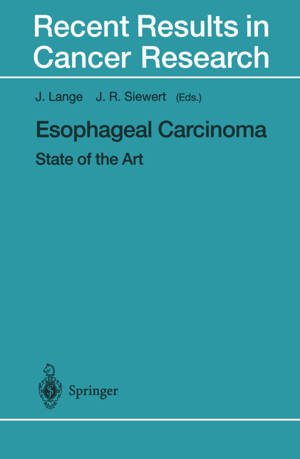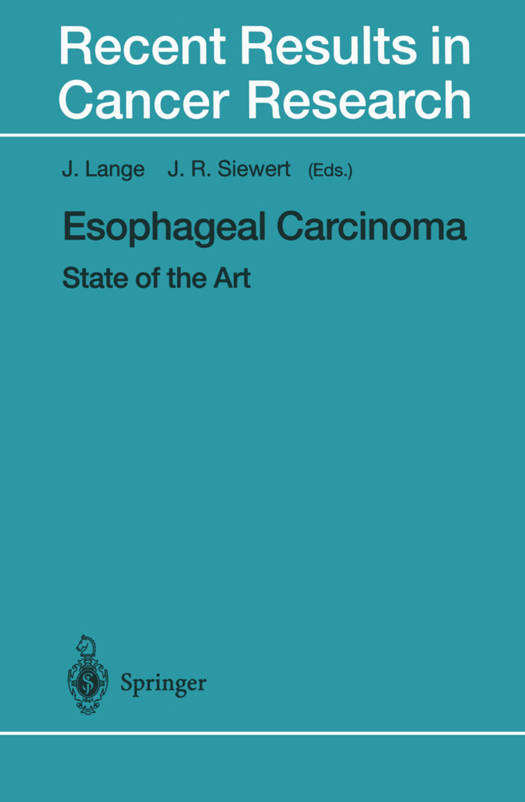
- Afhalen na 1 uur in een winkel met voorraad
- Gratis thuislevering in België vanaf € 30
- Ruim aanbod met 7 miljoen producten
- Afhalen na 1 uur in een winkel met voorraad
- Gratis thuislevering in België vanaf € 30
- Ruim aanbod met 7 miljoen producten
Esophageal Carcinoma
State of the Art
€ 159,45
+ 318 punten
Omschrijving
The Symposium "Esophageal Carcinoma - State of the Art" has aroused very great interest. The numerous enquiries have caused us to publish the congress proceedings in the present volume. Particular attention was paid to current topical problems. One of the areas on which the present volume focuses is the epidemiol- ogy and pathology of esophageal adenocarcinoma. Compared to squamous epithelial carcinoma, this is increasing in incidence in Europe. Modern diagnostic methods are described such as laser- induced fluorescence spectroscopy or the optical coherence endo- scopic technique. The latter enables normal mucosa to be distin- guished from dysplastic or malignant lesions, in contrast to con- ventional endoscopy. As in other tumors of the gastrointestinal tract, neoadjuvant therapy is becoming of increasing importance. Since the indication crucially depends on the tumor stage, two contributions deal with postoperative staging, with the diagnostic reliability of the individual techniques and new methods such as endoluminal MRI. There is no doubt that neoadjuvant chemo- therapy is indicated in tumors which are irresectable and in tumor stages in which resectability is uncertain. However, to what extent it should also be applied in the resectable stage will be discussed in the individual contributions both for adenocarci- noma and for squamous epithelial carcinoma. In the meantime, surgical treatment of esophageal carcinoma has been largely stan- dardized. Differences with regard to radicality are still found in the extent of lymphadenectomy, especially in inclusion of cervi- cal lymph nodes.
Specificaties
Betrokkenen
- Uitgeverij:
Inhoud
- Aantal bladzijden:
- 210
- Taal:
- Engels
- Reeks:
- Reeksnummer:
- nr. 155
Eigenschappen
- Productcode (EAN):
- 9783642640445
- Verschijningsdatum:
- 22/02/2012
- Uitvoering:
- Paperback
- Formaat:
- Trade paperback (VS)
- Afmetingen:
- 156 mm x 234 mm
- Gewicht:
- 322 g

Alleen bij Standaard Boekhandel
+ 318 punten op je klantenkaart van Standaard Boekhandel
Beoordelingen
We publiceren alleen reviews die voldoen aan de voorwaarden voor reviews. Bekijk onze voorwaarden voor reviews.








